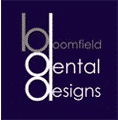Today, 3D printing can already print whole machines, machine components and even food items. The NASA space program is working on perfecting a 3D printer that can print slices of pizza for astronauts to enjoy while in outer space.
The medical field is heralding the applications of 3D printing technology for creating tissues and organ components that can help save lives. This technology is already used to construct almost all hearing aid components, and its ability to assist in dental care is extremely promising.
Increased Efficiency and Accuracy
The next generation of 3D printers can create extremely accurate dental models, veneers and dentures in-house, allowing dental professionals to achieve new heights of speed and precision. These innovations will make 3D printing integral in a dentist’s ability to recreate lost or damaged teeth as well as shape new cosmetic pieces for patients to help them achieve the perfect smile.
Leading 3D printer developers like Stratasys and Hewlett-Packard have already created viable 3D printing technology for dental and orthodontics labs. These printers have a range of oral health applications, including fashioning veneers, dentures, surgical guides, stone models and delivery trays. These printers are also making the efforts of dental labs easier and more accurate.
Higher Quality Components at a Lower Cost
Advancements in 3D printing technology can lead to more affordable dental services, especially for patients requiring elaborate procedures. From delicate dental effects to complex detail work, 3D printers are now capable of creating many of the components that working dentists need, without waiting for the services of an off-site lab.
Dental printers have also become more streamlined in recent years as well. They are now no larger than an office copy machine and can be easily stored in a dental office.
A Less Stressed Dentist = Happier Clients
With turnaround times dramatically reduced for dental clients who need veneers, implants or dentures, the use of a 3D printer clearly has benefits for both dentist and client morale. Each patient will receive a higher standard of care, which is ultimately beneficial to the dentist’s reputation as well as their business bottom line.
It’s expected that innovative 3D technology will account for the creation of around 60 percent of dentistry components by the year 2025. The faster service and higher accuracy provided by 3D printing technology will increase efficiency in the dental office, leading to more productive dentists as well as happier clients.

